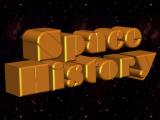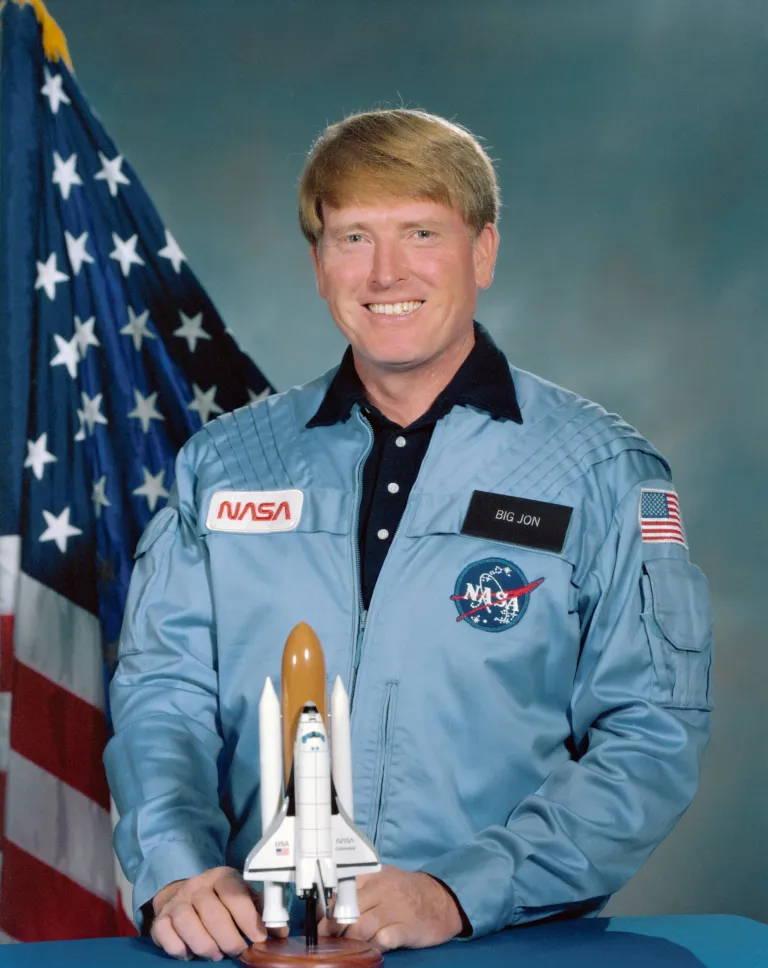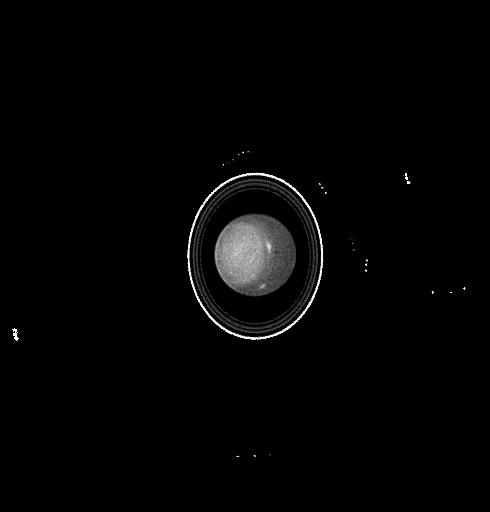
Space History for August 14
If you are not already a subscriber, you are welcome to enter your email address here to sign up to receive the Space History newsletter on a daily basis. Under no circumstances will we release your legitimate email address entered here to outside persons or organizations, and it will only be used for mailing the specific information you have requested.
| Enter your email address here: |
Unsubscribe instructions are included in every newsletter issue in case you decide you no longer wish to receive it.
Note: We record the IP address from which subscriptions are entered to help prevent SPAM abuses.
Race To Space
Someone will win the prize...
... but at what cost?
Visit RaceToSpaceProject.com
to find out more!
1777
Born, Hans Christian Oersted, Danish scientist, discovered electromagnetism
ref: en.wikipedia.org
1846 15:00:00 CST (GMT -6:00:00)
The Cape Girardeau meteorite, a 2.3 kg chondrite-type meteorite, struck the ground near the town of Cape Girardeau in Cape Girardeau County, Missouri.
ref: astronomy.activeboard.com
1870
C. H. F. Peters discovered asteroid #111 Ate.
1886
Born, Arthur J. Dempster, Canadian-American physicist best known for his work in mass spectrometry and his discovery of uranium-235
ref: en.wikipedia.org
1901
D. Stewart discovered asteroid #475 Ocllo.
1901
Gustave Whitehead flew his Number 21 airplane three times in the first claimed powered flight. The longest flight was 2.5 km (1.5 miles) at a height of up to 60 m (200 ft), significantly better than the Wright brothers 2 years, 4 months later.
Gustave Albin Whitehead (1 January 1874 - 10 October 1927) was a German-American aviation pioneer. His first published flight took place on 14 August 1901 in Connecticut when he flew his Number 21 three times, as reported by the Bridgeport Herald, the New York Herald and the Boston Transcript. The longest flight was 2.5 km (1.5 miles) at a height of up to 60 m (200 ft), significantly better than the Wright brothers' initial flights two years and four months later. There are witness reports that he flew about 1 km (half a mile) as early as 1899. In January 1902 he flew 10 km (7 miles) over the Long Island strait in the improved Number 22.
It has been suggested the reason his flights are so little known is he was of German origin, and that the Wright brothers donated their Wright flyer to the Smithsonian Institution on the condition the museum did not recognize an earlier airplane.
ref: en.wikipedia.org
ref: en.wikipedia.org
1943
Born, Jon Andrew McBride (at Charleston, West Virginia, USA), Captain USN, NASA astronaut (STS 41G; nearly 8d 5.5h in spaceflight)

Astronaut Jon A. McBride, NASA photo
Source: Wikipedia (www.jsc.nasa.gov unavailable August 2019)
ref: www.nasa.gov
1952
Born, Mark Charles Lee (at Viroqua, Wisconsin, USA), Colonel USAF, NASA astronaut (STS 30, STS 47, STS 64, STS 82; nearly 32d 22h total time in spaceflight)

Astronaut Mark Lee, NASA photo
Source: Wikipedia (www.jsc.nasa.gov unavailable August 2019)
ref: www.nasa.gov
1962 18:41:00 GMT
NASA and the USAF launched X-15A Const Theta Entry Test mission # 67 where Joe Walker reached 3747 mph (6030 kph, Mach 5.25) max. speed and 193,600 ft (59.009 km, 36.666 mi) max. altitude, using a new reentry method of pitch angle gauge instead of AOA.
ref: en.wikipedia.org
1964 17:54:00 GMT
NASA and the USAF launched X-15A-2 Stability Test mission # 114 in which R. Rushworth achieved 3590 mph (5778 kph, Mach 5.23) max speed and 103,300 ft (31.486 km, 19.564 mi) max altitude. Nose landing gear extended at Mach 4.5, both tires blew on landing.
ref: en.wikipedia.org
1966 15:32:00 GMT
NASA's Lunar Orbiter 1 was injected into Lunar orbit and became the first US spacecraft to orbit the Moon.
NASA's Lunar Orbiter 1 spacecraft, launched 10 August 1966, was designed primarily to photograph smooth areas of the Lunar surface for selection and verification of safe landing sites for the Surveyor and Apollo missions. It was also equipped to collect selenodetic, radiation intensity, and micrometeoroid impact data. The spacecraft was placed in an Earth parking orbit on 10 August 1966 at 19:31 UT and injected into a cislunar trajectory at 20:04 UT. The spacecraft experienced a temporary failure of the Canopus star tracker (probably due to stray sunlight) and overheating during its cruise to the Moon. The star tracker problem was resolved by navigating using the Moon as a reference, and the overheating was abated by orienting the spacecraft 36 degrees off-Sun to lower the temperature.
Lunar Orbiter 1 was injected into an elliptical near-equatorial Lunar orbit on 14 August, 92.1 hours after launch. The initial orbit was 189.1 km x 1866.8 km, had a period of 3 hours 37 minutes and an inclination of 12.2 degrees. On 21 August, perilune was dropped to 58 km, and on 25 August to 40.5 km. The spacecraft acquired photographic data from 18-29 August 1966, and readout occurred through 14 September 1966. A total of 42 high resolution and 187 medium resolution frames were taken and transmitted to Earth, covering over 5 million square km of the Moon's surface, accomplishing about 75% of the intended mission, although a number of the earlier high-res photos showed severe smearing. It also took the first two pictures of the Earth ever from the distance of the Moon, the first being taken on 23 August 1966. Accurate data were acquired from all other experiments throughout the mission. Orbit tracking showed a slight "pear-shape" to the Moon based on the gravity field, and no micrometeorite impacts were detected. The spacecraft was tracked until it impacted the Lunar surface on command at 7 degrees N latitude, 161 degrees E longitude (selenographic coordinates) on the Moon's far side on 29 October 1966 on its 577th orbit. The early end to the nominal one year mission was due to the small amount of remaining attitude control gas and other deteriorating conditions, and was executed to avoid transmission interference with Lunar Orbiter 2.
The Lunar Orbiter program consisted of 5 Lunar Orbiters which returned photographs 99% of the surface of the Moon (both the near and far side) with resolution down to 1 meter. Altogether, the Orbiters returned 2180 high resolution and 882 medium resolution frames. The micrometeoroid experiments recorded 22 impacts showing the average micrometeoroid flux near the Moon was about two orders of magnitude greater than in interplanetary space but slightly less than the near Earth environment. The radiation experiments confirmed that the design of Apollo hardware would protect the astronauts from average and greater-than-average short term exposure to solar particle events. The use of Lunar Orbiters for tracking to evaluate the Manned Space Flight Network tracking stations and Apollo Orbit Determination Program was successful, with three Lunar Orbiters (2, 3, and 5) being tracked simultaneously from August to October 1967. The Lunar Orbiters were all eventually commanded to crash on the Moon before their attitude control gas ran out so they would not present navigational or communications hazards to later Apollo flights.
The Lunar Orbiter program was managed by NASA Langley Research Center and involved building and launching 5 spacecraft to the Moon at a total cost of $163 million. That amount is coincidentally nearly the same as the initial budget ($160 million) for the Hyper-X (X-43) program later conducted jointly by the Langley and Dryden Research Centers, whose original plan was to fly 5 hypersonic aircraft in the Earth's atmosphere. Hyper-X ended up costing $230 million, and only 3 flights were made during its seven year development program.
ref: nssdc.gsfc.nasa.gov
1969
Born, Tracy Ellen Caldwell Dyson (at Arcadia, California, USA), chemist, Mission Specialist astronaut (STS 118, ISS 23/24; nearly 188d 19.25h total time in spaceflgiht)

Astronaut Tracy E. Caldwell, STS 118 mission specialist, NASA photo
Source: Wikipedia (spaceflight.nasa.gov killed 25 Feb 2021)
ref: en.wikipedia.org
1969
USSR Zond 7 reentered the Earth's atmosphere after having flown past the Moon on a picture-taking mission, and achieved a soft landing in a preset region south of Kustanai.
Zond 7 was launched 7 August 1969 towards the Moon from a mother spacecraft (69-067B) on a mission of further studies of the Moon and circulmunar space, to obtain color photography of the Earth and the Moon from varying distances, and to flight test the spacecraft systems. It was the only completely successful L1 flight that could have returned cosmonauts alive or uninjured to Earth. Earth photos were obtained on 9 August 1969. On 11 August 1969, the spacecraft flew past the Moon at a distance of 1984.6 km and conducted two picture taking sessions. Zond 7 successfully accomplished a double-dip re-entry into the Earth's atmosphere on 14 August 1969, and achieved a soft landing 50 km from its aim point south of Kustani in the USSR.
ref: nssdc.gsfc.nasa.gov
1975
Perth Observatory at Bickley discovered asteroid #2994 Flynn.
ref: books.google.com
1977
N. Chernykh discovered asteroids #2294, #2477 Biryukov, #2497 Kulikovsk, #2579 Spartacus and #2670 Chuvashia.
1979
Z. Vavrova discovered asteroid #2474 Ruby.
1980
Z. Vavrova discovered asteroid #2390 Nezarka.
1984 06:28:15 GMT
USSR launched the Progress 23 resupply vehicle from Baikonur to the Salyut 7 space station.
USSR launched Progress 23 on 14 August 1984 to transport various cargoes to the Salyut 7 orbital station. It docked with Salyut 7 on 16 Aug 1984 at 08:11:00 GMT, undocked on 26 Aug 1984 at 16:13:00 GMT, and was destroyed in reentry on 28 Aug 1984 at 01:28:00 GMT. Total free-flight time: 3.46 days. Total docked time: 10.33 days.
ref: nssdc.gsfc.nasa.gov
1985
E. Bowell discovered asteroid #3327 Campins.
1991 23:15:13 GMT
The Intelsat 6 F-5 communications satellite was launched from Kourou on an Ariane 44L booster, positioned in geosynchronous orbit at 24 deg W 1991-1997; 27 deg W 1997-1999.
ref: nssdc.gsfc.nasa.gov
1994
NASA's Hubble Space Telescope took pictures of the rings of Uranus. The images were first published 2 August 1998.

NASA Hubble Space Telescope image of Uranus revealing the planet's rings and inner satellites
Source: NASA JPL Galleries
ref: www.jpl.nasa.gov
1996 22:21:00 GMT
Russia launched the Molniya 1-89 communications satellite from Plesetsk into a 968 x 39,391 km (601 x 24,476 mi) orbit inclined 64.10 degrees to the Equator.
ref: nssdc.gsfc.nasa.gov
1997 12:17:10 GMT
Soyuz TM-25 landed in Kazakstan, 170 km SE of Dzezkazgan. The Soyuz landing rockets failed to fire on touchdown, giving one of the roughest landings experienced by a returning Mir crew.
ref: en.wikipedia.org
1999
NASA's Galileo probe made the Callisto 22 flyby.
Space Shuttle Atlantis, with the Galileo spacecraft aboard, was launched from Kennedy Space Center on 18 October 1989. Galileo was deployed on the 6th orbit around the Earth, with the first stage IUS burn executed an hour later. The second stage IUS burn occurred 5 minutes later to place Galileo on an Earth escape velocity of 7.1 miles/sec. 7 hours 46 minutes after launch, the IUS went into a first stage spinoff to deploy the RTG and science booms. The second stage IUS spinoff at a rate of 2.9 revolutions/minute for the separation of the IUS from Galileo soon followed. At that point, telemetry data were transmitted and received by the DSN (Deep Space Network).
The Galileo mission consisted of two spacecraft: an orbiter and an atmospheric probe. The trajectory which the spacecraft followed was called a VEEGA (Venus-Earth-Earth Gravity Assist), traveling first in toward the Sun for a gravity assist from Venus on 10 February 1990 before encountering the Earth two times on 8 December 1990 and two years later, on 8 December 1992. These encounters with Venus and the Earth allowed Galileo to gain enough velocity to get it out to Jupiter.
During the flybys of Venus and the Earth, Galileo scientists studied these two planets as well as the Moon, making some unprecedented observations. In addition, following each Earth flyby, Galileo made excursions as far out in the solar system as the asteroid belt, enabling scientists to make the first close-up studies of two asteroids, Gaspra (29 October 1991) and Ida (28 August 1993). Galileo scientists were also the only ones with a "direct view" of the Comet Shoemaker-Levy 9 fragment impacts on Jupiter in July 1994. All of this was prior to the primary missions of sending an atmospheric probe into Jupiter's atmosphere and studying Jupiter, its satellites, and its magnetosphere for two years with the orbiter.
Interplanetary studies were also made sporadically by some of the other Galileo instruments, including the dust detector, magnetometer, and various plasma and particles detectors, during its six year journey to Jupiter.
The probe was released from the orbiter on 12 July 1995, 147 days prior to its entry into the Jovian atmosphere on 7 December 1995, which was the same day the main spacecraft went into orbit around Jupiter.
The Galileo spacecraft's 14-year odyssey came to an end on Sunday 21 September 2003 when the spacecraft passed into Jupiter's shadow then disintegrated in the planet's dense atmosphere after 35 orbits around the planet. Its propellant was depleted, it was maneuvered to enter the Jovian atmosphere at 18:57 GMT (11:57 AM PDT). Entry was at 48.2 km/s from an orbit with a periapsis 9700 km below the 1-bar atmospheric layer. The spacecraft continued transmitting at least until it passed behind the limb of Jupiter at 1850:54 GMT, when it was 9283 km above the 1-bar level, surprising Galileo veterans who feared it might enter safe mode due to the high radiation environment. On its farewell dive, it had crossed the orbit of Callisto at around 1100 on 20 September, the orbit of Ganymede at around 0500 on 21 September, Europa's orbit at about 1145, Io's orbit at about 1500, Amalthea's orbit at 1756, and the orbits of Adrastea and Metis at 1825. Galileo was destroyed to prevent the possibility that its orbit would eventually be perturbed in such a way that it would crash on and biologically contaminate Europa, which was considered a possible place to search for life. Light travel time from Jupiter to Earth was 52 min 20 sec at the time of impact, and the final signal reached Earth at 1943:14 GMT.
See also the JPL PhotoJournal for Gaspra for more images and information about the asteroid Gaspra encounter.
ref: solarsystem.nasa.gov
2003
A blackout covering eight US states from Michigan to Massachusetts and part of southeastern Canada left 50 million people without power, the worst infrastructure collapse in US history. Alternative energy sources are required to prevent future problems.
A widespread power outage throughout parts of the Northeastern and Midwestern United States, and the Canadian province of Ontario occurred on Thursday, 14 August 2003, beginning just after 4:10 p.m. EDT. At the time, it was the world's second most widespread blackout in history, after the 1999 Southern Brazil blackout. The outage was much more widespread than the Northeast blackout of 1965, affecting an estimated 10 million people in southern and central Ontario, and 45 million people in eight northeastern U.S. states.
ref: SpacePowerNow.org
ref: en.wikipedia.org
2126
Comet Swift-Tuttle (5 km diameter) will reach perihelion, approaching close to Earth. Current predictions estimate it will pass at a distance of about 15 million miles.
ref: www.as.wvu.edu
We are going to run out of oil!
Visit SpacePowerNow.org
to help fix the problem.
SpacePowerNow.org - For Human Survival
Please help support our efforts by shopping from our sponsors.
This newsletter and its contents are Copyright © 2006-2025 by The L5 Development Group. All rights reserved. - Publication, in part or in whole, requires previous written permission. - Academic or personal-use citations must refer to http://L5DGbeta.com as their source. Thank you for your cooperation.


